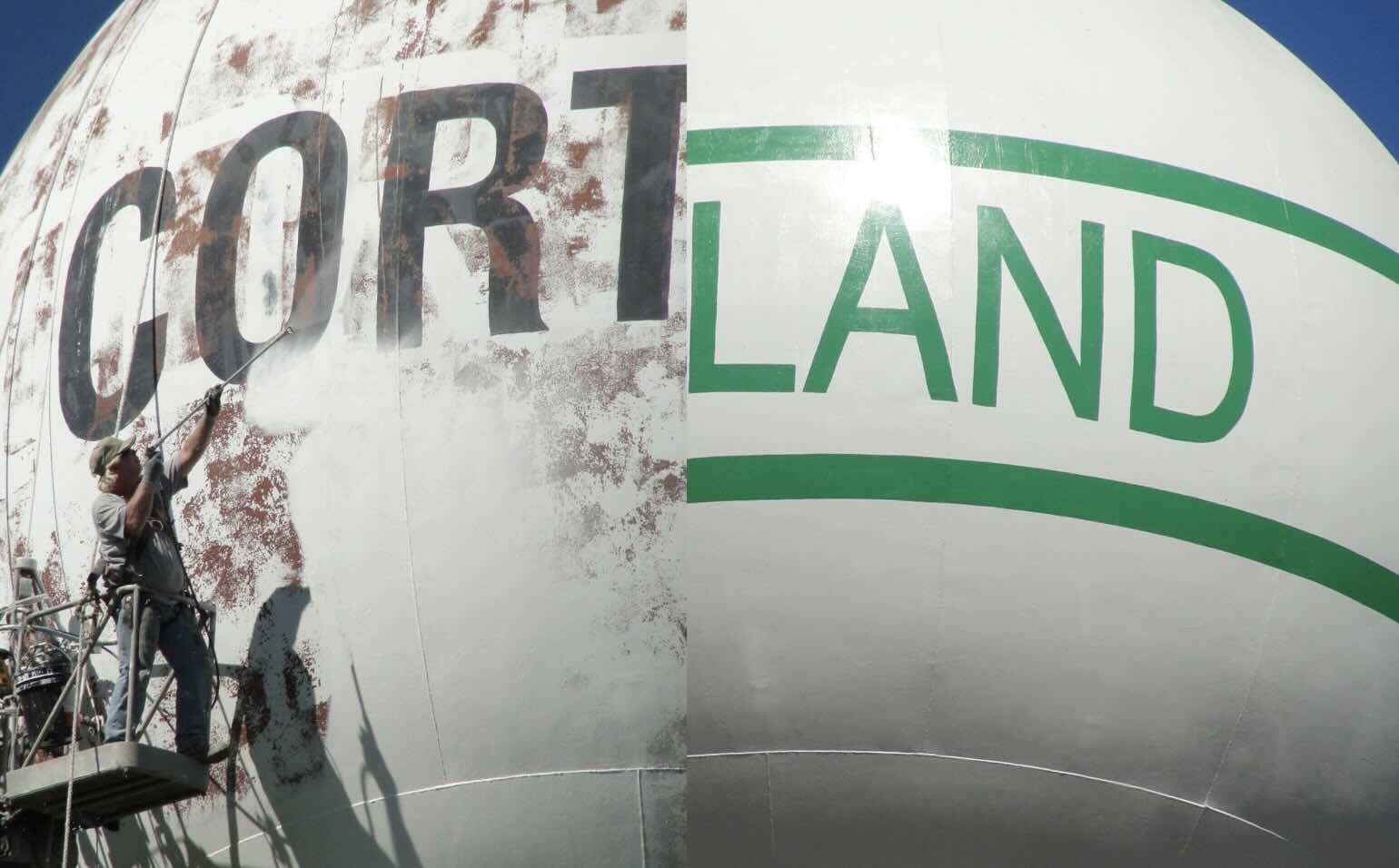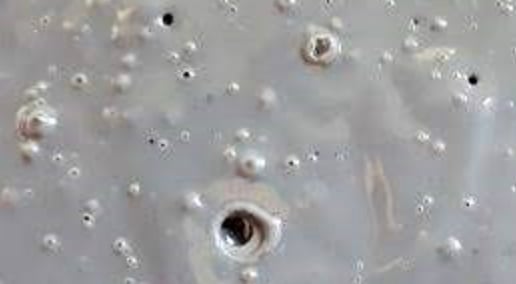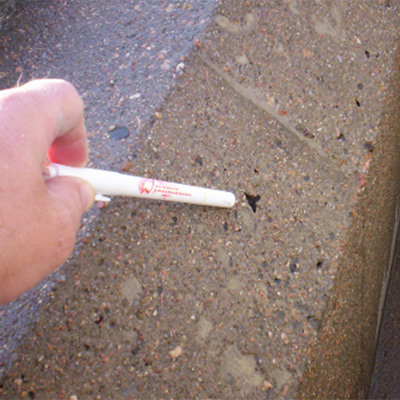
Overcoating Versus Complete Removal: Making the Right Choice
When faced with aging paint systems on steel structures, facility managers and specifiers must make a critical decision: should you overcoat?
- High Performance Coatings
When faced with aging paint systems on steel structures, facility managers and specifiers must make a critical decision: should you overcoat the existing system or completely remove it and start fresh? This choice can significantly impact both project costs and long-term performance. Understanding the key factors involved will help you make an informed decision that balances economics with durability.
Overcoating versus Complete Removal: There is much to consider
Understanding Your Options
Overcoating involves applying new paint layers directly over an existing coating system after proper surface preparation. It's often the more economical choice when conditions are favorable.
Complete removal and repainting means stripping all existing coatings down to bare substrate and applying an entirely new system. While more expensive initially, it may be necessary when the existing system has deteriorated beyond salvage.
Key Factors That Determine Your Best Option
1. Corrosion Assessment: The Make-or-Break Factor
The extent of corrosion present is perhaps the most critical factor in your decision. Using ASTM D 610 standards for evaluating rust on painted steel surfaces, you can determine if overcoating is viable:
Overcoating is generally NOT recommended when you have:
- Greater than 3.0% spot rusting (Grade 4-S or lower)
- Greater than 1.0% general rusting (Grade 5-G or lower)
- Greater than 0.3% pinpoint rusting (Grade 6-P or lower)
If your structure exceeds these corrosion thresholds, complete removal and repainting is likely your best option.
Rust Grade Classification Table
| Rust Grade | Percent of Surface Rusted | Spot | General | Pinpoint |
|---|---|---|---|---|
| 10 | ≤ 0.01% | None | None | None |
| 9 | 0.01% to 0.03% | 9-S | 9-G | 9-P |
| 8 | 0.03% to 0.1% | 8-S | 8-G | 8-P |
| 7 | 0.1% to 0.3% | 7-S | 7-G | 7-P |
| 6 | 0.3% to 1% | 6-S | 6-G | 6-P |
| 5 | 1% to 3% | 5-S | 5-G | 5-P |
| 4 | 3% to 10% | 4-S | 4-G | 4-P |
| 3 | 10% to 16% | 3-S | 3-G | 3-P |
| 2 | 16% to 33% | 2-S | 2-G | 2-P |
| 1 | 33% to 50% | 1-S | 1-G | 1-P |
| 0 | > 50% | None | None | None |
Critical Thresholds for Overcoating:
- Grades 4-S and below (>3% spot rusting) = NOT suitable
- Grades 5-G and below (>1% general rusting) = NOT suitable
- Grades 6-P and below (>0.3% pinpoint rusting) = NOT suitable
2. Film Integrity and Adhesion Testing
Before deciding on overcoating, you must evaluate the existing system's structural integrity through several tests:
Physical Assessment Requirements:
- Total film thickness measurement using magnetic gauges
- Coat count determination through cross-sectional analysis
- Adhesion testing using ASTM D 3359 tape tests and knife adhesion methods
- Visual inspection for defects like cracking, blistering, or delamination
Systems with extensive delamination, cracking, or poor adhesion between coats are poor candidates for overcoating.
ASTM D 3359 Adhesion Test Classification
Understanding adhesion test results is crucial for overcoating decisions. The ASTM D 3359 tape test provides standardized ratings:
| Classification | Surface Area Removed | Description |
|---|---|---|
| 5B | None | The edges of cuts are completely smooth; none of squares is detached |
| 4B | <5% | Small flakes detached at intersections; less than 5% affected |
| 3B | 5-15% | Small flakes along edges and at intersections; 5-15% affected |
| 2B | 15-35% | The coating has flaked along edges of cuts partly or wholly in large ribbons, and whole squares have detached; 15-35% affected |
| 1B | 35-65% | The coating has flaked along most of cut edges in large ribbons and whole squares detached; 35-65% affected |
| 0B | >65% | Flaking and detachment worse than Grade 1 |
For Overcoating: Average adhesion rating should be at least 3.0 across all test locations.
3. Understanding Delamination Risk
One of the most important concepts in overcoating decisions is the Delamination Risk Factor (DRF). This scale from 1 (lowest risk) to 5 (highest risk) helps predict the likelihood of system failure after overcoating:
- DRF 1-2: Excellent candidates for overcoating
- DRF 3-3.5: Good candidates with proper system selection
- DRF 4-4.5: High risk - proceed with extreme caution
- DRF 5+: Not recommended for overcoating
The risk increases significantly in freeze-thaw environments and with high film thickness applications.
Selecting the Right Overcoat System
Not all coating systems are equal when it comes to cohesive stress - the internal forces that can pull apart an existing paint system. Understanding these differences is crucial:
Cohesive Stress Levels (1 = Low, 5 = High)
Low Stress Options (1-3):
- Elastomeric acrylic emulsions
- Standard acrylic emulsions
- Medium to long oil alkyds
High Stress Options (4-5):
- Epoxy mastics and water-borne epoxies
- Conventional 2-component solvent-based epoxies
- Aliphatic urethanes
Key Principle: Match your overcoat system's cohesive stress level to your existing system's delamination risk factor. High-risk existing systems require low-stress overcoat options.
System Selection Matrix
| Delamination Risk Factor | Recommended Coating Types |
|---|---|
| 5 or greater | Not Recommended |
| 4.5 | Not Recommended |
| 3.5-4 | A or B (Elastomeric/Acrylic emulsions only) |
| 3 | A, B, C or D (Most coating types acceptable) |
| 2 | A, B, C, D or E (All coating types acceptable) |
| 1 | A, B, C, D or E (All coating types acceptable) |
Delamination Risk Assessment Table
| Adhesion Test Results* | Base DRF** | DRF with Freeze/Thaw | DRF with Freeze/Thaw & High Film Thickness |
|---|---|---|---|
| 0 (Poor) | 5 (High) | 5+ | 5+++ |
| 1 | 4.5 | 5 | 5++ |
| 2 | 4 | 4.5 | 5+ |
| 3 | 3 | 3.5 | 4 |
| 4 | 2 | 2.5 | 3 |
| 5 (Excellent) | 1 (Low) | 1.5 | 2 |
*Average of adhesion tests at minimum 3 locations (3 trials each per ASTM D 3359)
**Degree of risk for existing system delamination after overcoating
Environmental Considerations
Geographic location plays a significant role in system selection:
Northern Climates (Freeze-Thaw Zones):
- Increased stress on coating systems
- Flexible, low-stress overcoats become even more critical
- Higher delamination risk factors for all existing systems
Milder Climates:
- More overcoat options available
- Less restrictive system selection criteria
The Testing Process: Don't Skip This Step
Regardless of your preliminary assessment, always conduct test patches before full-scale application:
Standard Test Patch Procedure (ASTM D 5064)
- Surface Preparation: Clean existing system thoroughly
- Test Application: Apply candidate systems to representative areas
- Cure and Evaluate: Allow proper cure time before testing
- Adhesion Testing: Minimum average rating of 3.0 required
- Visual Assessment: Check for wrinkling, lifting, or other adverse effects
Required Documentation
For each test location, record:
- Structure type and location
- Environmental conditions during application
- Surface preparation methods used
- Cure time and temperature
- Adhesion test results (minimum 3 trials per location)
- Visual observations and any defects noted
- Film thickness measurements
Curing Guidelines
Long-Term Curing: Minimum 6 months preferred for full assessment Short-Term Curing: Based on average daily temperatures:
- 50°F (10°C): 14 days minimum
- 70°F (21°C): 10 days minimum
- 90°F (32°C): 7 days minimum
Test patches should achieve at least 3.0 average adhesion rating and show no adverse effects like wrinkling or lifting.
Cost-Benefit Analysis
Overcoating Advantages:
- Lower initial cost (typically 30-50% less than complete removal)
- Faster application and reduced downtime
- Minimal environmental concerns (no lead paint removal issues)
- Less surface preparation required
Complete Removal Advantages:
- Fresh start with optimal adhesion
- Longer service life potential
- Better performance in harsh environments
- No hidden problems from existing system failures
Making the Final Decision
Choose Overcoating When:
- Corrosion levels are within acceptable limits
- Existing system shows good adhesion (DRF ≤ 3.5)
- Budget constraints are significant
- Downtime must be minimized
- Environmental regulations restrict blast cleaning
Choose Complete Removal When:
- Extensive corrosion is present
- Poor adhesion or film integrity exists
- Long-term performance is critical
- Budget allows for optimal solution
- Existing system has history of problems
Best Practices for Success
Regardless of your chosen approach:
- Conduct thorough evaluations using standardized test methods
- Document all findings for future reference
- Follow manufacturer specifications exactly
- Consider environmental factors in system selection
- Plan for regular maintenance to extend service life
Conclusion
The decision between overcoating and complete removal isn't always straightforward, but following systematic evaluation procedures will guide you to the right choice. When in doubt, consult with coating specialists who can help interpret test results and recommend appropriate systems for your specific conditions.
Remember: a thorough upfront assessment may cost more initially, but it's far less expensive than a premature coating failure that requires emergency repairs. Take the time to do it right, and your coating system will provide years of reliable protection.
For complex projects or when test results are borderline, consider consulting with us. We can provide valuable expertise in interpreting results and recommending optimal solutions for your specific application.
LET OUR KNOWLEDGE AND EXPERTISE HELP ENSURE YOUR NEXT PROJECT IS SUCCESSFUL

What is Outgassing and How Is It Prevented
Outgassing can be one of the most frustrating...

Concrete Repair & Resurfacing in Wastewater...
Wastewater treatment facilities face some of the...

Three Critical Questions for Coatings Selection
If a single coating could do it all, coating...